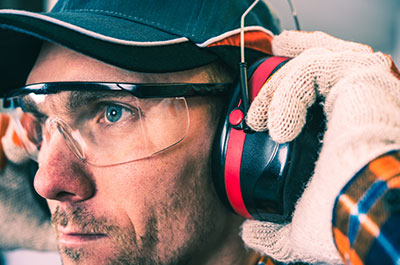If you’ve ever encountered poison ivy or other toxic plants like poison oak or poison sumac, you might recognize the tell-tale itching, angry rash and blisters that follow exposure to these seemingly innocent—and sometimes hard to identify—plants.
Poison ivy, oak and sumac earned the “poison” descriptor thanks to urushiol, an oily resin found in the roots, stems and leaves. According to Anna Axelson, M.D., a dermatologist at Henry Ford Health, most people have a reaction when they’re exposed to urushiol.
The best way to avoid that reaction? “Learn to recognize the plants and steer clear,” says Dr. Axelson. And if you do get exposed, know how to treat the rash to resolve it as quickly as possible.
How Do You Identify Poison Ivy, Poison Oak And Poison Sumac?
“Poison ivy, poison oak and poison sumac aren’t always easy to spot,” Dr. Axelson says. Poison ivy and oak are the source of the old saying, “leaves of three, let it be” because of their characteristic clusters of three leaflets. But since that’s not always enough to know what you’re dealing with, also look out for these characteristics:
Poison ivy

Dermatology At Henry Ford
- Vine or shrub that trails along the ground (commonly found on hiking trails) or climbs on low plants, trees and even telephone and light poles
- Clusters of three glossy leaves (edges can be smooth or toothed)
- Leaves change color from red in spring to green in summer and red, orange or yellow in fall
- May have flowers and berries
- Found in most of the United States, except Alaska, Hawaii and some parts of the West coast
Poison oak
- Poison oak has a different look depending on where you are in the country:
- In Eastern and Southern states, forms a low shrub
- On the Pacific Coast, forms tall clumps or long vines
- Clusters of toothed or lobed fuzzy green leaves with round tips
- May have yellow-white berries
Poison sumac
- Poison sumac usually grows in wet an d soiled areas like swamps, often in the Eastern United States.
- Leaves have between 7 and 13 leaflets with smooth edges; leaflets occur in pairs up the stem, with one leaflet at the top.
- Leaves change color seasonally: orange (spring), green (summer), and orange, red or yellow (fall).
- May have yellow and green flowers and/or white and green fruits.
How Can You Protect Yourself Against Poisonous Plants?
The most important thing you can do to protect yourself is identify poison ivy, oak and sumac and avoid them. But there are other things you can do to avoid getting exposed:
- Avoid contact with suspicious-looking plants.
- Shower as soon as possible after hiking or spending time in wooded areas.
- Wash garden tools.
- Wear long pants and long-sleeved shirts when working and playing outdoors.
What Does A Reaction To Poison Ivy, Poison Oak And Poison Sumac Look Like?
Determining whether you’ve had a reaction to one of these poisonous plants isn’t always obvious. Symptoms can surface any time from a couple of hours to several days after exposure to the urushiol oil in these plants—and not everyone develops a rash.
“Most people have been exposed to poison ivy, poison oak or poison sumac, and react with a rash,” Dr. Axelson says. “If it’s your first exposure, you might not develop the rash. But that doesn’t mean you won’t get a rash from later exposures.”
In general, poison ivy, poison oak and poison sumac produce:
- An itchy, red rash
- Blisters
- Swelling
A rash from urushiol typically appears in a straight line, or in a geometric arrangement that reflects the way the leaves brush against your skin.
Are Poison Ivy, Poison Oak And Poison Sumac Contagious?
The rash from these plants is not contagious. So if someone in your family has a rash from exposure to poison ivy, touching the rash won’t cause you to break out in blisters, too.
The caveat, says Dr. Axelson, is that you can develop a reaction if you touch someone’s skin, clothing or even an object like a blanket or seat belt that still has urushiol oil residue on it.
What Should You Do If You’ve Been Exposed To Poisonous Plants?
It’s not always easy to avoid poison ivy, oak or sumac. The good news: You can minimize your chances of having a reaction by:
- Cleaning your skin. Wash with soap and cool water as soon as you can after your exposure. The sooner you get the oil off, the lower the risk that it transfers to clothing, pets and other people in your household. You may even be able to avoid a reaction if you clean off the oil before your skin reacts.
- Giving your pet a bath. If there’s any chance your pet brushed up against poison ivy, oak, or sumac, or if the oil transferred from your skin to their fur, put on gloves and wash them immediately. While most pets are not sensitive to urushiol, the oil can stick to fur and end up in your house—and on your skin.
- Treating the symptoms. “Use cool, wet compresses on the rash, take oatmeal baths and try over-the-counter anti-itch ointments such as hydrocortisone and calamine lotion,” says Dr. Axelson.
- Resisting the urge to itch. While it’s tempting to scratch at the rash, bacteria from under your fingernails can infect the blisters.
In most cases, reactions to poison ivy, poison oak and poison sumac go away within a few weeks without any treatment. That said, if you have any of the following symptoms, visit your healthcare provider:
- Blisters that ooze pus
- Blisters appearing around your eyes, mouth or genitals
- Fever over 100 degrees Fahrenheit
- Itching that gets worse instead of better over time
- Rash that’s widespread or severe
Reviewed by Dr. Anna Axelson, a board-certified dermatologist who sees patients at Henry Ford Medical Centers in Detroit and Grosse Pointe Farms.



